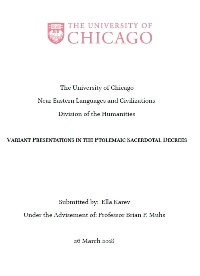| Main » Ad Board » ДРЕВЕН ЕГИПЕТ И АФРИКА » Език и писменост |
| 05.11.2020, 18:01 | |
Декретите от жреческите събори в Канопус (238 г. пр. н.е.), Рафиа (217 г. пр. н.е.) и Мемфис (196 г. пр. н.е.) са изключително важни извори за историята, религията, културата, обществените отношения и езика през епохата на Птолемеите. Достатъчно е само да си припомним, че тройният текст на последния, изписан върху Розетския камък е отворил пред учените портите към отдавна погребаните тайни на тази велика цивилизация. Но значението им съвсем не се изчерпва с това и съвременните египтолози откриват все нови и нов начини да анализират тези паметници. АЛТЕРНАТИВЕН ЛИНК / ALTERNATIVE LINK: - на древноегипетски език (латинска транслитерация), старогръцки и английски език, от Google Drive, формат PDF. Сваляне с ляв бутон (downloading by left button) от страницата на предоставящия сървър, после през бутона стрелка надолу/after by down arrow button. АЛТЕРНАТИВЕН ЛИНК / ALTERNATIVE LINK: - - на древноегипетски език (латинска транслитерация), старогръцки и английски език, от Academia.Edu, формат PDF.Сваляне с ляв бутон (downloading by left button) и после през бутона Download. Academia.Edu изисква регистрация или влизане през Фейсбук/Google акаунт за сваляне на файловете/ Academia.Edu needs a registration (you can use the Facebook or Google account) for downloading.
| |
| Views: 901 | Placed till: 05.12.2021 | Rating: 0.0/0 | |

